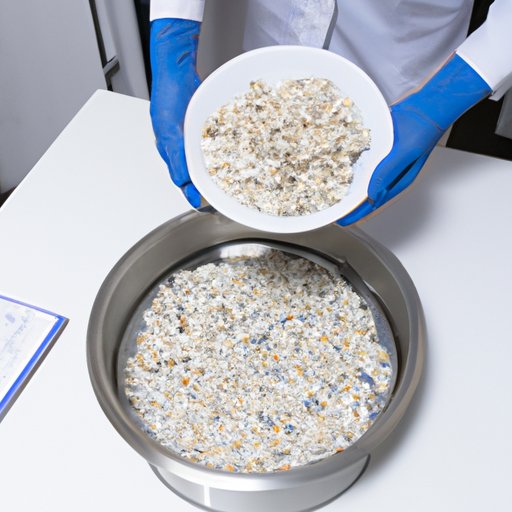Introduction
Freeze-drying is a method of preserving food that has been used for centuries. The process of freeze-drying involves flash freezing the food and then slowly lowering the temperature in a vacuum chamber. As the temperature decreases, the frozen water in the food turns into vapor, leaving behind the solid food components. This process preserves the flavor, texture, and nutritional value of the food while also extending its shelf life. Freeze-drying is used in a variety of industries, from pharmaceuticals to food production, and even in the home kitchen.
The Science Behind Freeze-Drying
The science behind freeze-drying is relatively simple. In order for the process to occur, the food needs to be frozen quickly and then placed in a vacuum chamber. As the temperature in the chamber is lowered, the frozen water molecules turn from a solid state to a vapor state and are removed from the food. This leaves behind only the solid components of the food, which have been preserved in their original form.
The advantages of freeze-drying are numerous. It preserves the flavor, texture, and nutritional value of the food, as well as extending its shelf life. Freeze-dried foods can last up to 25 years if stored properly. Additionally, because the water has been removed from the food, it takes up less space, making it ideal for travel or long-term storage.
Freeze-Drying Techniques and Applications
Freeze-drying is used in many different industries, from pharmaceuticals to food production. In the pharmaceutical industry, freeze-drying is used to preserve drugs and vaccines. In the food industry, freeze-drying is used to produce instant coffee, dried fruits and vegetables, and even pet food. Freeze-drying is also used to preserve flowers and other delicate materials.
Common uses of freeze-dried products include camping and backpacking meals, emergency food supplies, and astronaut food. Freeze-dried foods are lightweight, easy to transport, and require no refrigeration. They also retain much of their nutritional value and taste, making them an ideal choice for outdoor adventurers.
How to Freeze-Dry at Home
Freeze-drying at home is possible with the right equipment. To begin, you will need a deep freezer and a freeze-drying machine. These machines can be purchased online, but they are expensive. Once you have the necessary equipment, you will need to prepare the food for freeze-drying. This includes washing and cutting the food into small pieces, and then placing them onto trays to be frozen.
Once the food is frozen, it can be placed into the freeze-drying machine. The machine will slowly lower the temperature in the vacuum chamber, causing the frozen water molecules to turn into vapor. Once this process is complete, the freeze-dried food can be stored in airtight containers for up to 25 years.
Freeze-Dried Foods and Their Uses
Freeze-dried foods are becoming increasingly popular due to their convenience and nutritional benefits. Popular freeze-dried foods include fruits and vegetables, meats, fish, eggs, dairy products, grains, and legumes. Freeze-dried foods are often used in camping and backpacking meals, emergency food supplies, and astronaut food.
Freeze-dried foods are rich in vitamins, minerals, and antioxidants. They are also low in calories and fat, and high in fiber. Additionally, freeze-dried foods are easy to prepare—simply add water and let sit for a few minutes before eating. This makes them an ideal choice for those on the go.
Conclusion
Freeze-drying is a method of preserving food that has been used for centuries. The process involves freezing the food and then slowly lowering the temperature in a vacuum chamber, causing the frozen water molecules to turn into vapor. This process preserves the flavor, texture, and nutritional value of the food while also extending its shelf life. Freeze-drying is used in many industries, from pharmaceuticals to food production, and can even be done at home with the right equipment.
Freeze-dried foods are becoming increasingly popular due to their convenience and nutritional benefits. They are lightweight, easy to transport, and require no refrigeration. Additionally, freeze-dried foods are rich in vitamins, minerals, and antioxidants, making them an ideal choice for those on the go.
In conclusion, freeze-drying is an effective method of preserving food that has many applications in both industry and the home kitchen. With its numerous benefits, freeze-drying is sure to continue to be a popular choice for food preservation in the coming years.
(Note: Is this article not meeting your expectations? Do you have knowledge or insights to share? Unlock new opportunities and expand your reach by joining our authors team. Click Registration to join us and share your expertise with our readers.)
